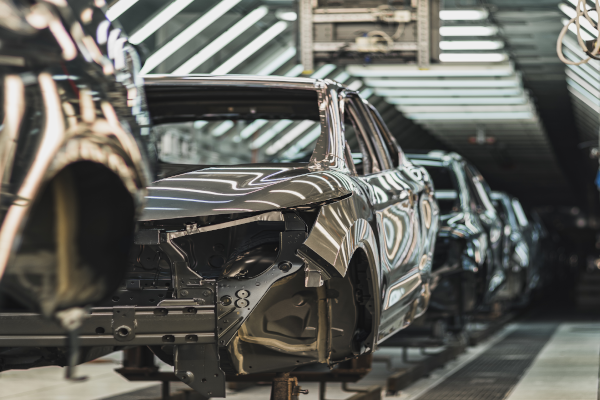
BSR. This acronym can stand for many different things (over 50, in fact, according to Google.)
But in the automotive sector, it can mean only one thing: buzz, squeak and rattle. And 99% of the people who deal with BSR in this industry really wish they didn’t have to.
We happen to be among the 1% that don’t mind ‒ because we have the tools and expertise to eliminate BSR for good. Here, I’ll introduce you to three of the coating technologies we use to help automotive manufacturers eliminate buzz, squeak and rattle from their vehicles.
But first ‒ what exactly is BSR?
What Does ‘BSR’ Mean in the Automotive Industry?
Buzz, squeak and rattle (BSR) is a catch-all term for a variety of fiction-induced noises that can be produced by a vehicle. It’s one of the biggest challenges facing automotive engineers today, and the number 1 cause of consumer complaints about new vehicles.
Generally, BSR is the unintended outcome of two component surfaces coming into contact with one another:
- Squeak is caused by a stick-slip action when one part moves against another other.
- Buzz is caused by the structure or component itself as it vibrates against another surface.
- Rattle is caused by a collision between two components.
These noises might also be characterized by a consumer as squeals, creaks, clangs or bangs. At any rate, they’re the last thing any new vehicle owner wants to hear on their first long trip.
The automotive industry has long recognized the importance of vehicle noise when it comes to customer perception. Not only are speaks, buzzes and rattles annoying, they can have a hugely negative effect on how customers rate a vehicle’s quality and dependability. No one wants to save up for a brand-new car only to find that it starts rattling the second you take it down an unpaved road!
When you put it this way, I think you can see why 99% of the people who have this particular issue would much rather not. That’s why numerous articles, videos and blog posts have been made about BSR and how to solve it. In fact, in 2011, someone wrote an entire 296 book on this issue, covering such areas as background theory, testing, analysis and elimination with chapters from leading experts in the field!
Now, I might not have written the book on BSR, but I can tell you about three of the ways we can help you solve it here at Plastico.
3 Ways to Eliminate BSR Using Coatings
One of the go-to solutions for eliminating frictional noise is to apply a protective coating to at least one of the surfaces responsible.
Anti-BSR coatings save manufacturers a lot of time and trouble by avoiding the need to use secondary measures like felt spacers and lubricants post-production. With the right application and the correct choice of coating, we can effectively eliminate BSR for the entire life of the vehicle.
Plastico Industries offers three coatings that are excellent in removing BSR: nylon, Plastisol and Polyarmor. Each product has its own unique properties and potential applications.
- Plastisol Coating offers colour, comfort, electrical insulation, texture, gripping power, and resistance to acids, alkalis and oils. Plastico Industries is an industry leader in Plastisol dip coating for the automotive industry.
- Polyarmor Coating offers a wide range of performance attributes including impact and corrosion resistance as well as UV protection. Plastico offers Polyarmor dip coating.
- Nylon Powder Coating offers resistance to corrosion, abrasion and chemicals, with natural lubricity and noise-dampening qualities. At Plastico, we offer nylon dip and nylon spray options.
Suffering from BSR? Let us show your components a little TLC and help you allieviate this headache once and for all! Our coating machines are designed to accommodate a myriad of parts. We’re set up to handle small, medium and large parts as well as small, medium and large volumes.
Call us at 1-866-543-3334 or contact us online to learn more about all our coating services

